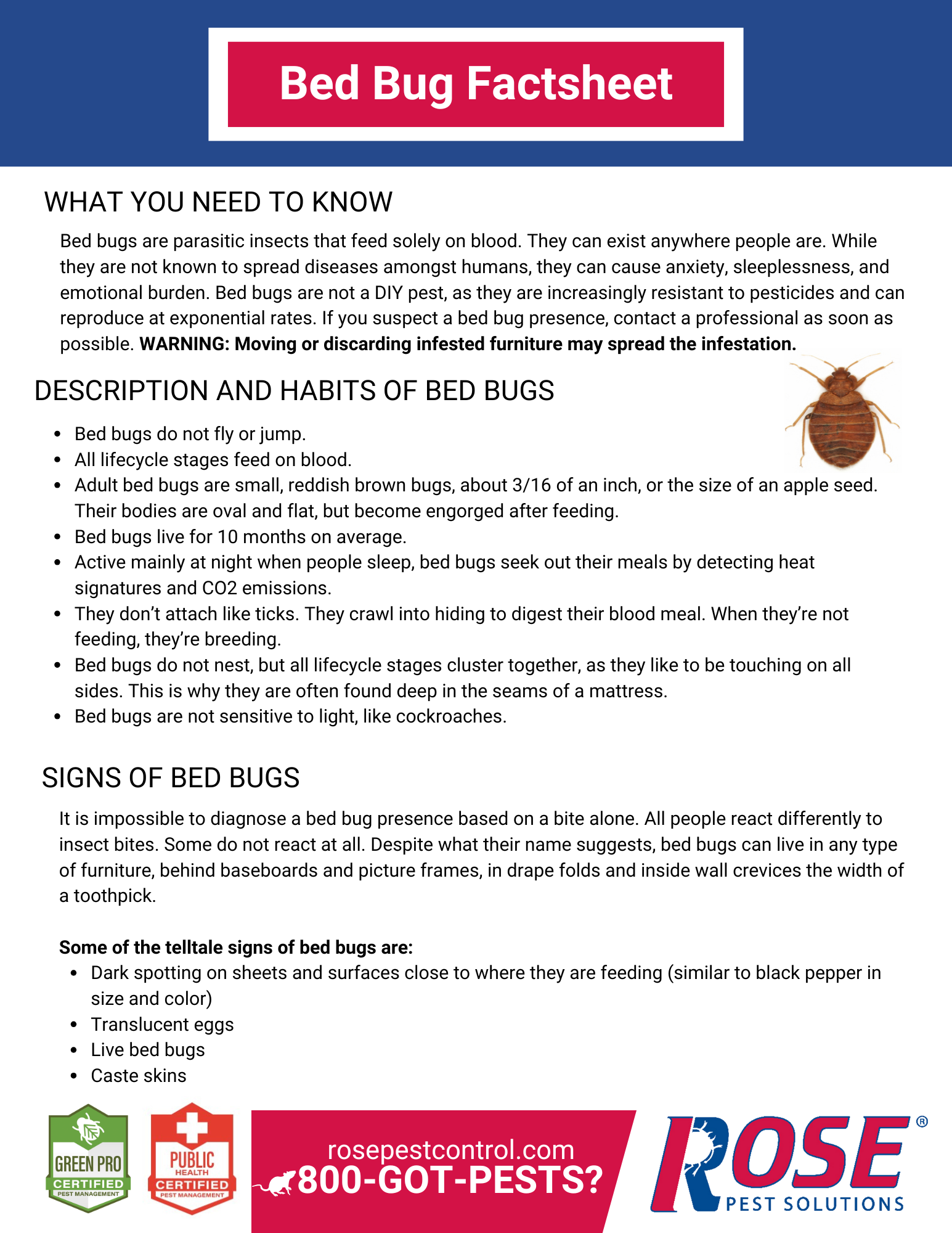8 Simple Techniques For Bed Bug Services
Table of Contents6 Easy Facts About Bed Bug Services ShownOur Bed Bug Services PDFsNot known Facts About Bed Bug ServicesSome Known Factual Statements About Bed Bug Services
A professional bed bug inspection is a meticulous process and requires specialized knowledge. Bed bugs are tiny, quick, and skilled at concealing themselves that often dwell in small hiding places in furniture and walls. Because of their secretive nature, a thorough inspection is essential to identify the full scope of the problem. Professional inspectors employ a range of techniques, tools, and expertise to identify infestations early, reducing the risk of escalation.The first step in any professional inspection involves understanding bed bug biology and behavior. Bed bugs belong to the Cimicidae family and progress through eggs, several nymphs, and adult stages. Adults are oval, flat, reddish-brown insects that lack wings and have long legs and antennae. Their feeding apparatus injects anticoagulants while drawing blood, producing skin irritation and visible marks. Knowing these traits guides professionals in locating infestations.
Early detection is essential for stopping the problem from spreading. Professionals look for specific indicators such as tiny ink-like droppings, molted skins, and egg clusters (Bed Bug Services). Female bed bugs are capable of laying hundreds of eggs, potentially causing full-blown infestations. Evidence of discarded skins and eggs indicates active infestation and requires prompt inspection
Preparing for an inspection demands meticulous preparation. Inspectors often recommend clearing clutter from treatment areas, which makes it easier to inspect furniture and wall edges. Bedding and linens may be treated with heat before inspection, and then stored in sealed bags to prevent re-infestation. Wall decor, mirrors, and pictures should be taken down to inspect behind frames. Vacuuming furniture and floors can remove loose pests, and vacuum bags should be discarded carefully to avoid spreading.
The Only Guide for Bed Bug Services
The inspection itself is comprehensive and careful. Inspectors start with beds and adjacent furniture, checking seams, folds, handles, and crevices. Upholstered furniture, including couches and chairs, is scrutinized to reveal any hidden pests. Baseboards, moldings, the edges of wall-to-wall carpeting, electrical outlets, closets, and storage areas receive detailed attention, as these can be frequent hiding places.
Specialized tools improve inspection effectiveness. Flashlights, magnifying lenses, multi-tools, and mirrors help i was reading this inspect hard-to-see areas. Monitoring devices like interceptor traps or sticky pads allow ongoing monitoring of pest activity. Some companies employ trained canines, which accurately identify active infestations, distinguishing them from non-active traces.

Meticulous documentation is a key component. Inspectors document all signs, infestation levels, and suggested measures. This supports transparency and offers proof of inspection. Residents are often asked to avoid disturbing potential infestation signs, as this maintains inspection effectiveness.
After inspection, a monitoring plan may be recommended to follow up on findings. Continuous monitoring assesses the effectiveness of treatment, and interviews with household members helps pinpoint problem areas. Cooperation from residents enhances detection.
The 6-Minute Rule for Bed Bug Services

Professional inspections offer a higher level of accuracy than DIY attempts. Trained inspectors spot subtle signs overlooked by untrained eyes, prevent misdiagnosis, and give peace of mind.
Bed bug inspections are particularly important in places where infestations spread easily. Inspectors examine adjacent units, common areas, and shared furniture to identify potential spread (Bed Bug Services). This stops further spread
In summary, a professional bed bug inspection includes find more information identifying the pest, readying the environment, inspecting meticulously, her latest blog employing tools, maintaining records, and ongoing monitoring. Each step contributes to accurate detection, effective treatment planning, and long-term prevention.
Bed Bug Services for Beginners
